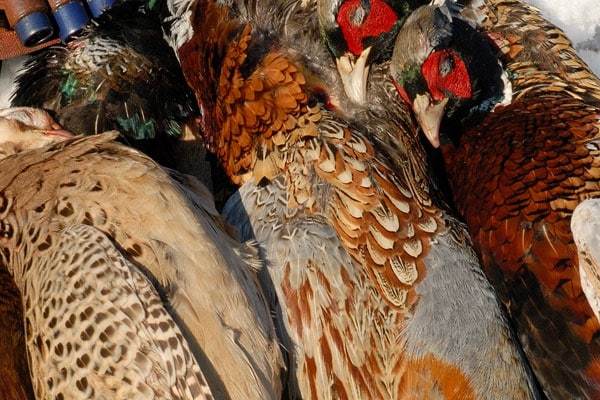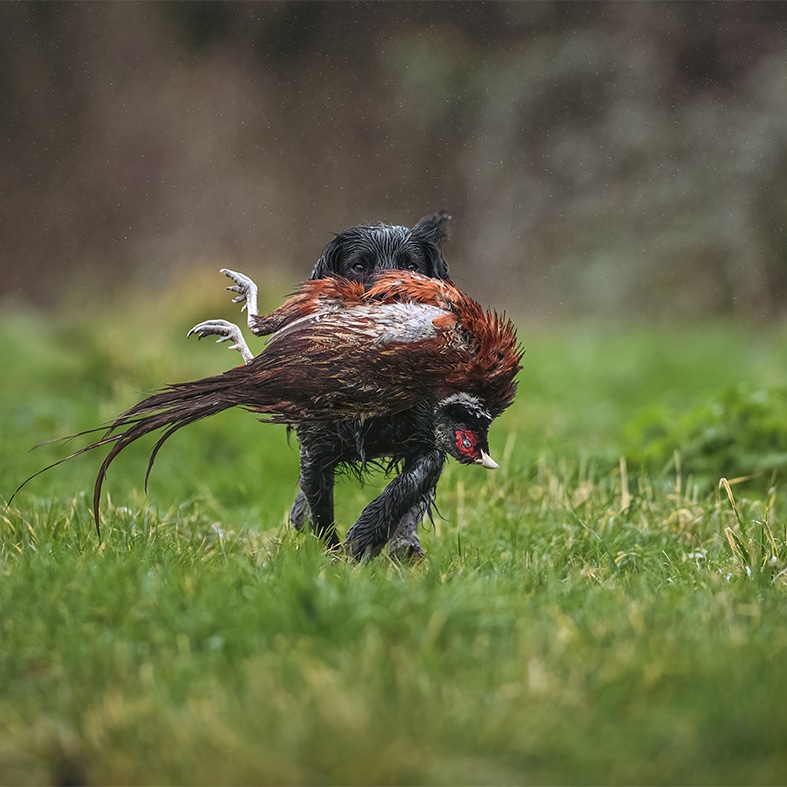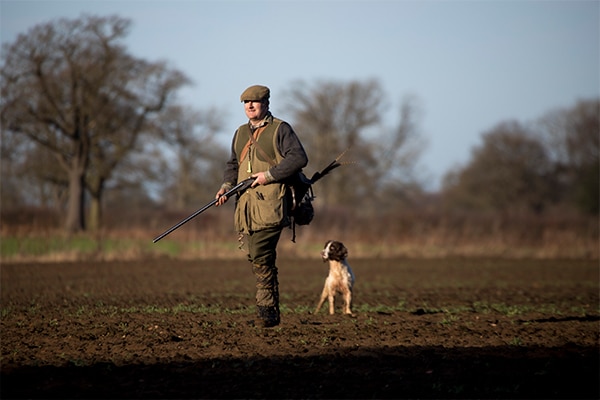
Small game meat hygiene
This one-day course will ensure that shooters can meet the requirements regarding the sale and supply of game.
Get information on the legal shooting season for mammals and birds in the UK.
Learn about our current conservation projects and how you can get involved.
Comprehensive information and advice from our specialist firearms team.
Everything you need to know about shotgun, rifle and airgun ammunition.
Find our up-to-date information, advice and links to government resources.
Everything you need to know on firearms law and licensing.
All the latest news and advice on general licences and how they affect you.


Home » Game Shooting » Picking up
This code of practice aims to provide guidance to newcomers. It acts as a reminder to those with experience who enjoy using their own dogs as part of a team of pickers-up in the shooting field.
High standards underpin public and political support for shooting, now and in the future.
This code provides advice at two levels:
THE FOLLOWING GOLDEN RULES APPLY:
Pickers-up
A good team of pickers-up is essential to the enjoyment and success of a day’s shooting. It is also essential to avoid suffering and the waste of game. Everyone who shoots live quarry should ensure that there is always a dog available for retrieving.
Organisers of shoots must ensure that adequate provision is made for retrieving shot game.
Traditionally, picking-up is carried out immediately after each drive. However, when a bird is wounded it should be picked-up and humanely dispatched immediately, provided it is safe to do so.
You should:
Dogs used for picking up must:
Picking up on pheasant shoots
Partridge and grouse shooting
The guidance for pheasant shoots generally applies to other types of driven shooting but note the following in particular:
During and after the shoot
Remember the health and welfare of your dog is paramount.
This could include a whistle, leads, game dispatcher, game carrier (device for carrying dead game), first aid kit, waterproof clothing, towels to dry yourself and your dog, drinking water and food for your dog.
Basic points of law
If you own or are responsible for a dog, even on a temporary basis, you have a legal obligation under animal welfare legislation to care for it properly.
The control of dogs
Owners and handlers of dogs commit an offence if their dogs worry livestock on agricultural land.
Transport of animals
Be aware that if you are transporting your dog in connection with an economic activity you may be subject to rules and regulations governing the transport. Recreational shooting, beating and picking up are not normally considered to be an economic activity.
Membership of BASC provides third party liability insurance and cover for you and your dog while it is working or participating in a related activity such as training.
It is advisable to consider additional insurance for your dog. The following are Included in BASC dog insurance policies:
For further help and advice, call the BASC gundog helpline on 01244 573 019 or email gundogs@basc.org.uk
Details of the BASC gundog (non-shooting) membership pack can be obtained from the marketing department on 01244 573 012.
For nutritional advice call the Skinner’s helpline on 01379 384 247.
BASC is the largest representative body for sporting shooting in the UK.

This one-day course will ensure that shooters can meet the requirements regarding the sale and supply of game.

Find out everything you need to know below. Whether you are new to game shooting, or want more practical advice we’ve got you covered.

Goose shooting is a traditional and highly-valued recreation sport and brings sustainable economic benefits to rural areas.
Sign up to our weekly newsletter and get all the latest updates straight to your inbox.
© 2024 British Association for Shooting and Conservation. Registered Office: Marford Mill, Rossett, Wrexham, LL12 0HL – Registered Society No: 28488R. BASC is a trading name of the British Association for Shooting and Conservation Limited which is authorised and regulated by the Financial Conduct Authority (FCA) under firm reference number 311937.
If you have any questions or complaints about your BASC membership insurance cover, please email us. More information about resolving complaints can be found on the FCA website or on the EU ODR platform.
This website uses cookies so that we can provide you with the best user experience possible. Cookie information is stored in your browser and performs functions such as recognising you when you return to our website and helping our team to understand which sections of the website you find most interesting and useful.
Strictly Necessary Cookie should be enabled at all times so that we can save your preferences for cookie settings.
If you disable this cookie, we will not be able to save your preferences. This means that every time you visit this website you will need to enable or disable cookies again.
This website uses Google Analytics to collect anonymous information such as the number of visitors to the site, and the most popular pages.
Keeping this cookie enabled helps us to improve our website.
Please enable Strictly Necessary Cookies first so that we can save your preferences!
More information about our Cookie Policy